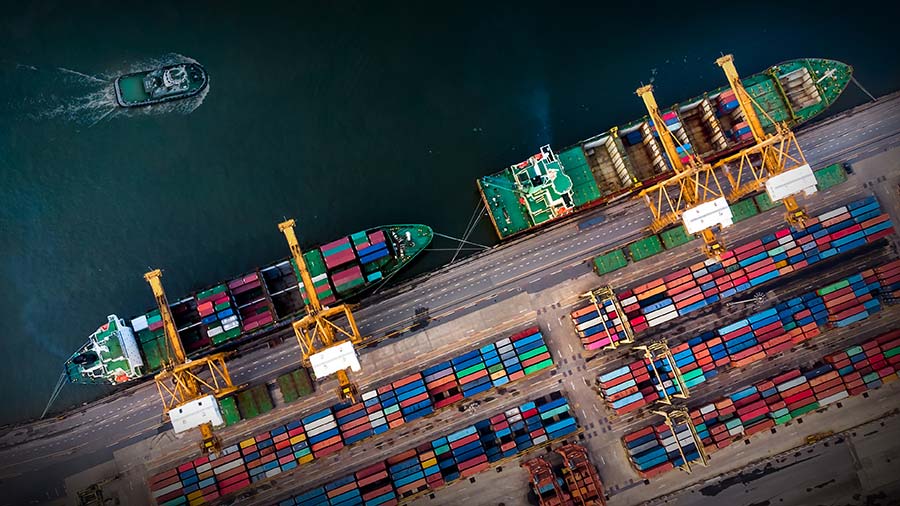Farm business outlook 2022: Economic prospects
 © AdobeStock/Travel mania
© AdobeStock/Travel mania Global economic disruption due to Covid, coupled with Brexit-related upheaval in trade and labour markets, will continue to affect the UK economy for many years, says Graham Redman, a partner in The Andersons Centre.
As the world struggles to resume activities postponed from last year, demand for fuel, steel, cars, computer chips, and some farm goods has exceeded supply.
This shows how easily supply chains can be disrupted, heightening the already nervous global geopolitical position.
See also: Analysis: How farmers can reverse food self-sufficiency decline
Covid has accelerated the transition from western superpower to eastern.
A laissez-faire style of food policy is not ideal in a geo-politically unstable world, where markets are disrupted and potentially more exposed to control by a few key factors.
For 50 years membership of the EU, which supplied more than 90% of our food import requirements, provided sufficient food security for the UK.
Now, food supply takes on a different meaning, magnified by Covid.
Economic prospects summary
- Economic growth will appear robust but will come from a low base due to the Covid effect
- Government support for entrepreneurial thinking will fit with new farm policy
- Interest rate rises could be used to curb inflation in 2022 as consumer spending recovers and workforce capacity is tight
Factor in possible interest rate rises
Higher inflation looks set to be the big economic issue in 2022. This is being driven by the return of consumer spending, including items postponed from last year, when supply is tight.
This suggests base rates and borrowing costs might rise at some point next year.
Anybody with long-term debt might look to fix their rates if they can.
As demand for goods and services has risen there has been a corresponding increase in demand for employees.
This has coincided with the loss of skilled EU workers, alongside the impact of self-isolation requirements, producing more than a million job vacancies in the UK.
Economic balance elusive
It will take time for these skills to be replaced and the economy to return to balance. Supply constraints will limit economic activity.
Overall economic growth will look robust in 2022 – an average of independent forecasts in October suggested 5% growth. However, this is only partially rebuilding what has been lost during Covid.
Farm prices have been remarkably settled for some years, but the past months have reminded us that commodities are inherently volatile and we are potentially entering a phase of turbulent prices.
This leaves considerable opportunities for some and dangers for the unwary or unprotected.
As last year, Covid, Brexit and global disorder will continue to provide opportunities for entrepreneurs. In its Covid policies, government looked after employees and small businesses.
This approach appears to fit with new farm policy; protect the environment, pay farmers for services they provide, without offering social welfare payments.
This will suit the lateral thinker. Perhaps now is the time to review traditional practices that have worked until now but might not in the future.
New ways of farming might fit the new economy better.
Farm profitability prospects
Increasing costs are likely to reduce returns for farming businesses in 2022, reversing the upward trend seen this year.
Andersons predicts that Total Income From Farming (TIFF), a measure of the aggregate profit from all UK farming and horticultural businesses for the calendar year, could revert to 2020 levels next year.
For 2020, provisional DEFRA figures show TIFF dropped by a fifth in real terms compared to the year before, to just over £4bn, due to the twin effects of weather and Covid-19.
Andersons’ own forecast suggests the 2021 figure will be almost a third higher, thanks to the lifting of Covid restrictions and generally robust prices across many farm sectors.
Looking to 2022, the full effects of cost increases are forecast to have an impact.
Some cost pressures may be short term. The hope is that energy prices will reduce over the coming year and costs for fuel and fertiliser, in particular, will be lower in 2023.
Increases in labour and machinery seem more structural and long-term.
Some commodity markets may weaken in 2022. For example, red-meat markets may struggle to remain at recent historically high levels.
The forecasts assume an exchange rate of €1=85-90p. Europe remains a key trading partner so this exchange rate is key in determining product prices and therefore profits.
Overall, assuming the forecasts are anywhere near correct, the farming industry will continue to face a roller-coaster of profitability.
